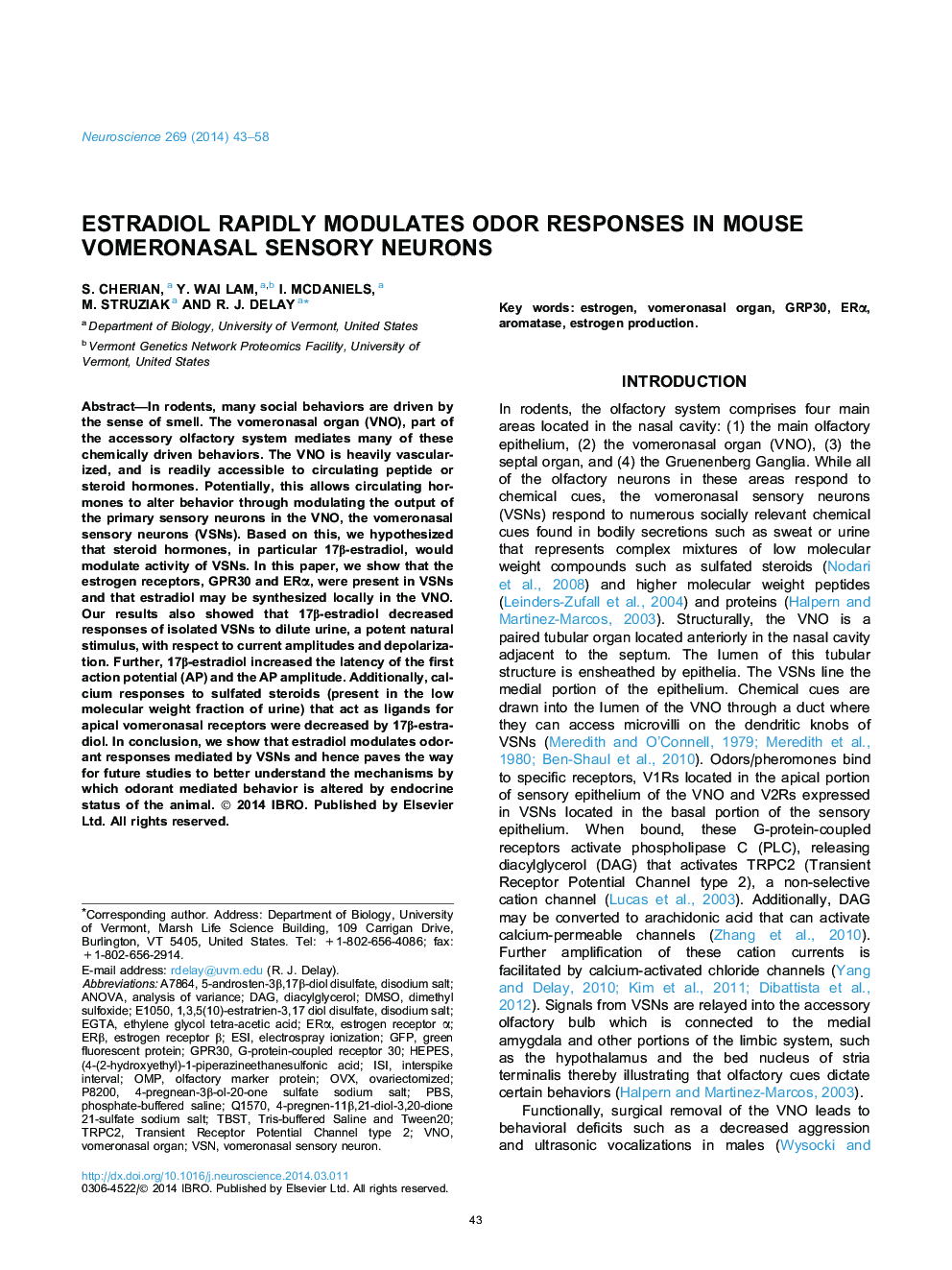| Article ID | Journal | Published Year | Pages | File Type |
|---|---|---|---|---|
| 6273896 | Neuroscience | 2014 | 16 Pages |
â¢Estrogen receptors ERα and GPR30 were present in mouse VSNs but the estrogen receptor ERβ was not.â¢17β-Estradiol rapidly altered urine-induced currents and action potentials in mouse VSNs.â¢17β-Estradiol rapidly decreased sulfated steroid-induced Ca2+ transients in mouse VSNs.â¢Estradiol may be locally synthesized in the VNO evidenced by aromatase mRNA and MS based estradiol quantification.â¢There were no sex differences in estrogen receptors, effects of estradiol on responses or local production of estradiol.
In rodents, many social behaviors are driven by the sense of smell. The vomeronasal organ (VNO), part of the accessory olfactory system mediates many of these chemically driven behaviors. The VNO is heavily vascularized, and is readily accessible to circulating peptide or steroid hormones. Potentially, this allows circulating hormones to alter behavior through modulating the output of the primary sensory neurons in the VNO, the vomeronasal sensory neurons (VSNs). Based on this, we hypothesized that steroid hormones, in particular 17β-estradiol, would modulate activity of VSNs. In this paper, we show that the estrogen receptors, GPR30 and ERα, were present in VSNs and that estradiol may be synthesized locally in the VNO. Our results also showed that 17β-estradiol decreased responses of isolated VSNs to dilute urine, a potent natural stimulus, with respect to current amplitudes and depolarization. Further, 17β-estradiol increased the latency of the first action potential (AP) and the AP amplitude. Additionally, calcium responses to sulfated steroids (present in the low molecular weight fraction of urine) that act as ligands for apical vomeronasal receptors were decreased by 17β-estradiol. In conclusion, we show that estradiol modulates odorant responses mediated by VSNs and hence paves the way for future studies to better understand the mechanisms by which odorant mediated behavior is altered by endocrine status of the animal.
